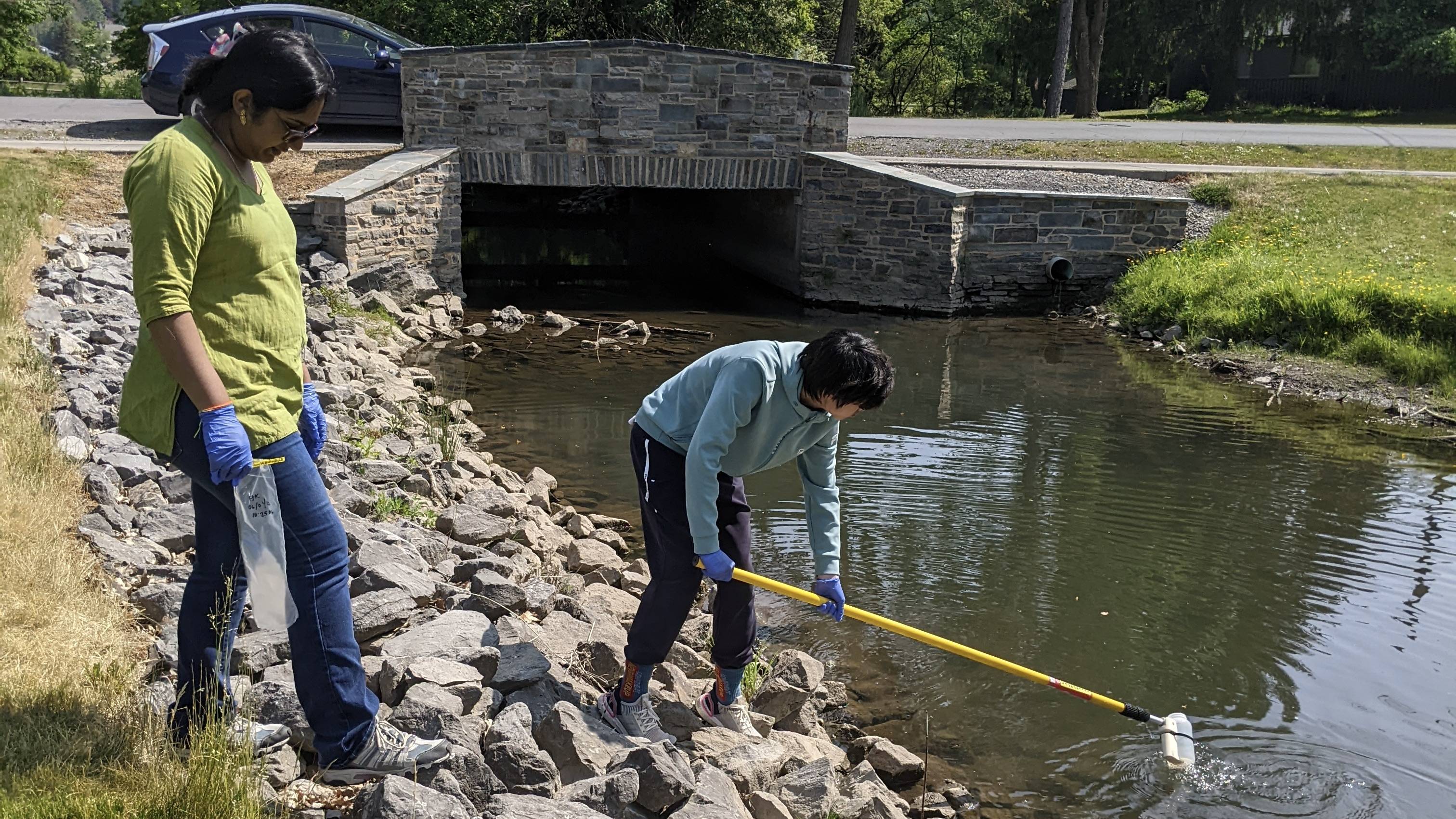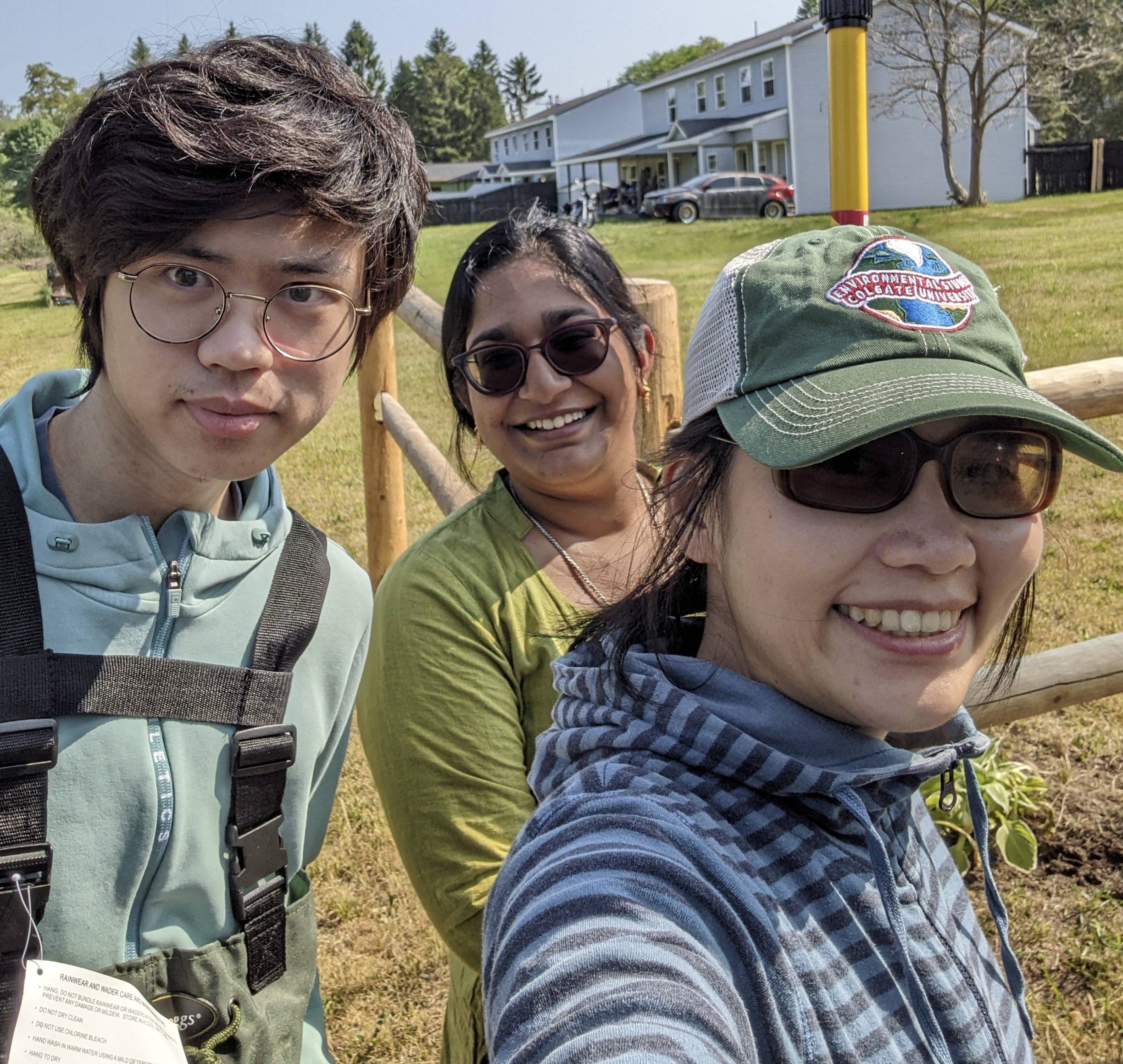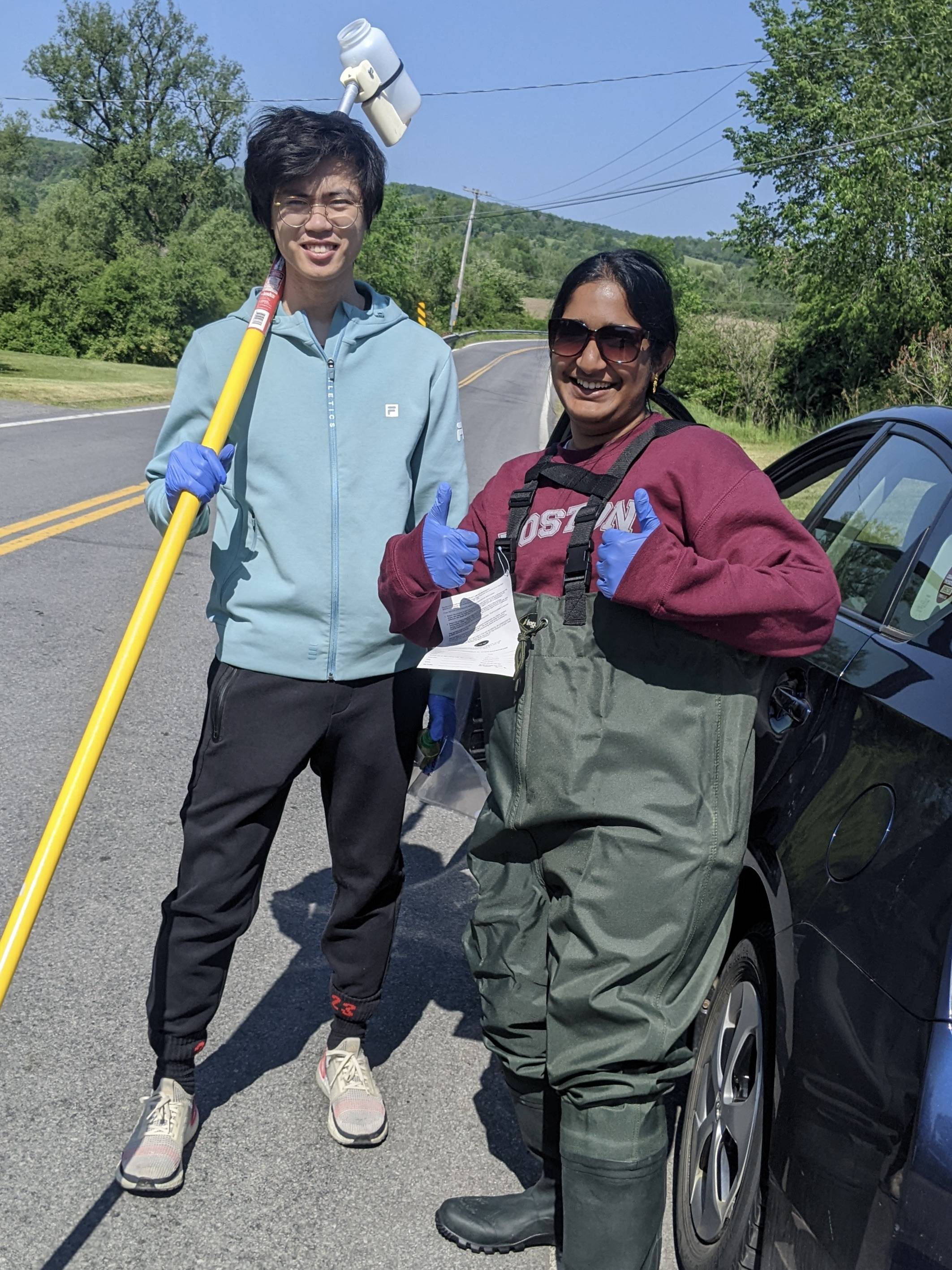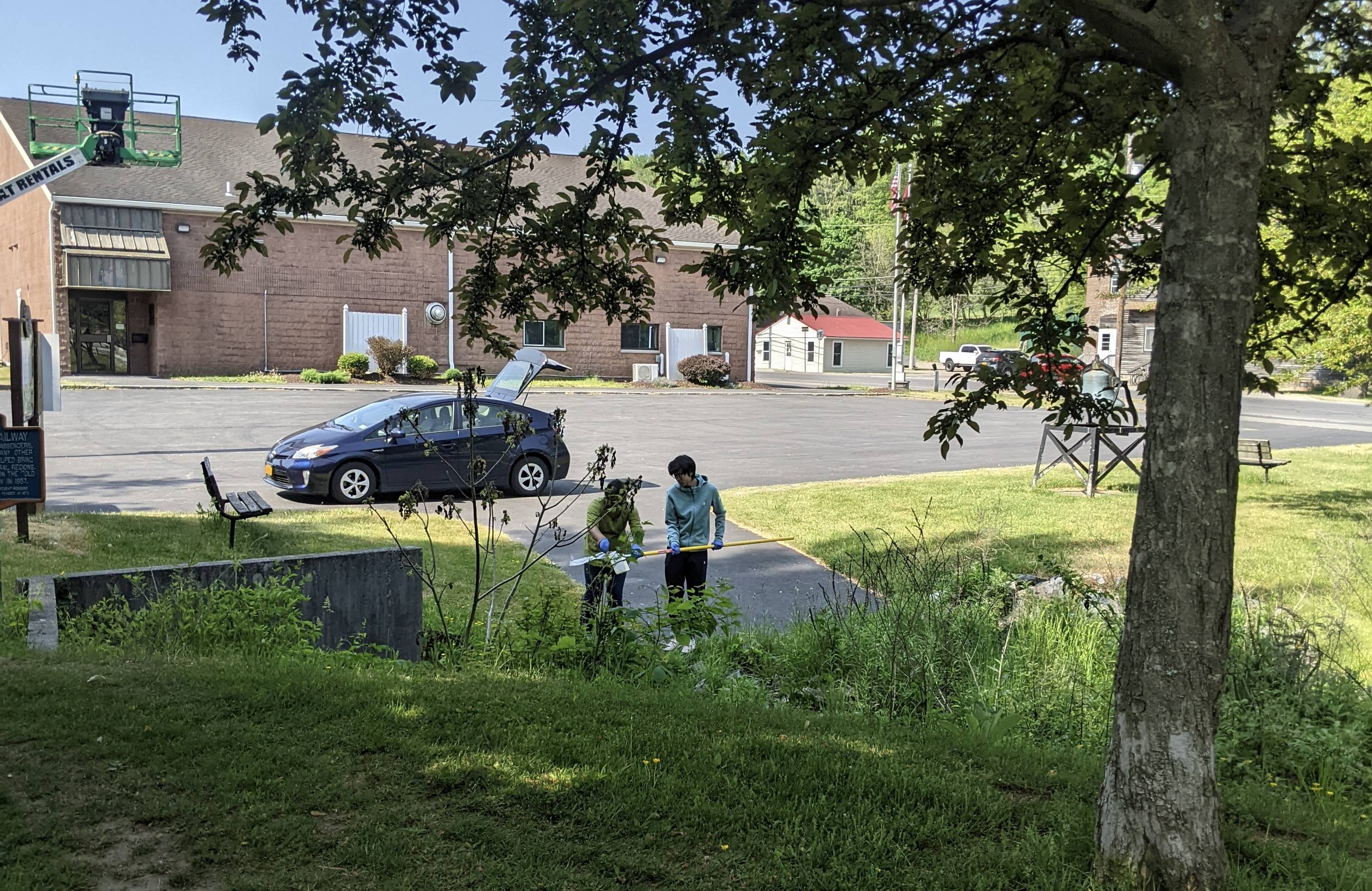Environmental studies major Harshitha Talasila ’26, from Hopewell Junction, N.Y., describes her summer research, monitoring water quality in Hamilton.
This summer, I am conducting water quality research in the Hamilton area. I have always been interested in water quality monitoring because water is an essential part of our lives and the environment, and knowing how to monitor and assess water quality can help me to better understand how waterways are managed. This opportunity to work with Assistant Professor Linda Tseng of the environmental studies department is especially exciting because I am getting hands-on experience in water quality monitoring and learning what a future career in the field might be like.
Understanding how certain contaminants, like acetaminophenol or plasticizers, affect water quality — whether or not they are within safe levels — and considering the potential impacts on the environment and people are essential to keeping track of water quality. The addition of these contaminants to drinking water sources may lead to adverse health effects for people, especially if they are at an unsafe level. In the environment, these chemicals can disrupt natural processes and impact the development of aquatic life. It is important to keep track of entry points of these contaminants as they can travel swiftly and for great distances in water.
We began this research by considering sampling sites and looking at which waterways connect. By establishing the route of our water samples, we can better understand where contaminants are originating. If pollutants are entering upstream, we can potentially trace them back to the source in another project.
We selected five sites in the Hamilton area, spanning from Woodland Pond to Taylor Lake and farther downstream. We collected the water samples on three separate days, around similar times. This way, we could get more consistent samples, as temperatures can affect the chemical reactions of contaminants.
We also observed the impact of sediment on filtration, and we could determine these areas were not turbid. This is an important discovery because it means that sediment does not block sunlight to aquatic life, nor does it obstruct the ecosystem functions in a substantial way. After collecting our samples, we went back to the lab to further filter and process the water using gas chromatography (GC).
Now that we have completed collection and preliminary analysis, I am waiting for the results to be processed so we can assess the water quality and draw conclusions about its impacts. It was exciting to learn about water quality monitoring. I pursued this research in order to gain the skills necessary to conduct research elsewhere. I hope to use these skills in the future, particularly in India — the Krishna River — where I was born and raised for the first few years of my life and where I return during many summers.



